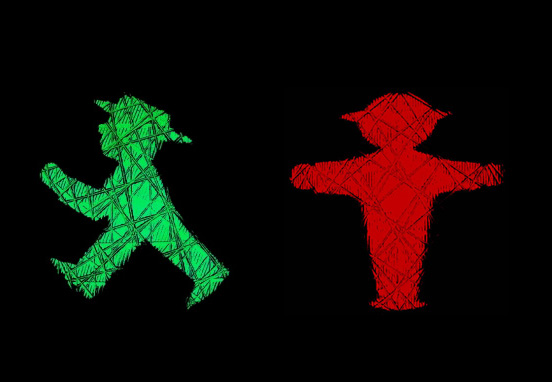Source

Source: GHI
In 1961, the GDR Ministry of Transportation commissioned traffic psychologist Karl Peglau to design new pedestrian stop-and-go lights. After many years of professional, technical, and government testing, Peglau’s red and green “Ampelmännchen” (or “little traffic-light men”) debuted in East Berlin in 1969 and were later installed throughout the entire GDR. After unification, West German officials arranged for the East German “Ampelmännchen” to be replaced with their West German (or new European) equivalents. At the same point in time, industrial designer Markus Heckhausen began collecting discarded models and turning them into lamps to market and sell. The widespread media attention generated by these lamps helped lead to the founding of the “Committee to Save the Ampelmännchen,” a group of civically-minded East and West Germans who finally achieved their goal in 1997: not only could the old East German traffic signal remain at all existing locations, but it was also to be favored in all new traffic installations in the East German federal states. The Ampelmann® has been registered as a trademark since 1997.

Source: GHI